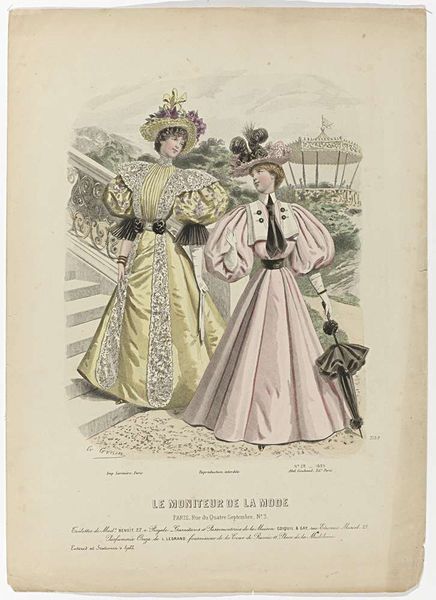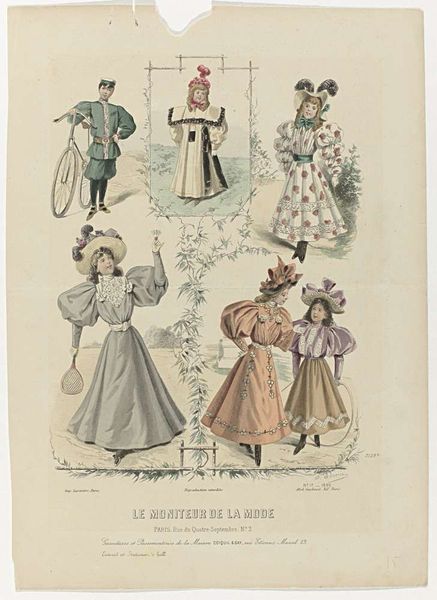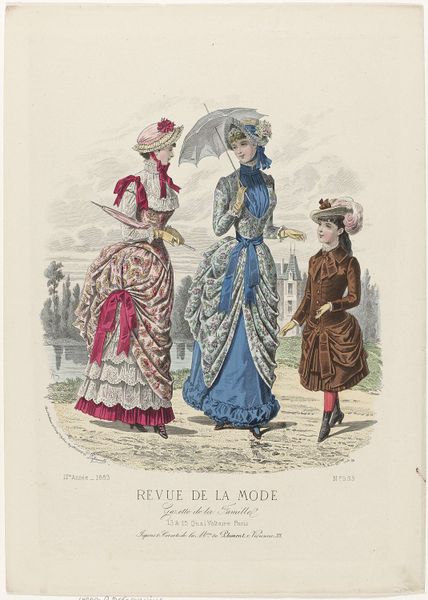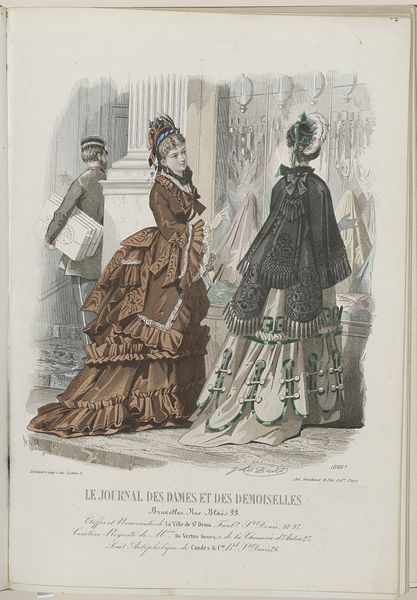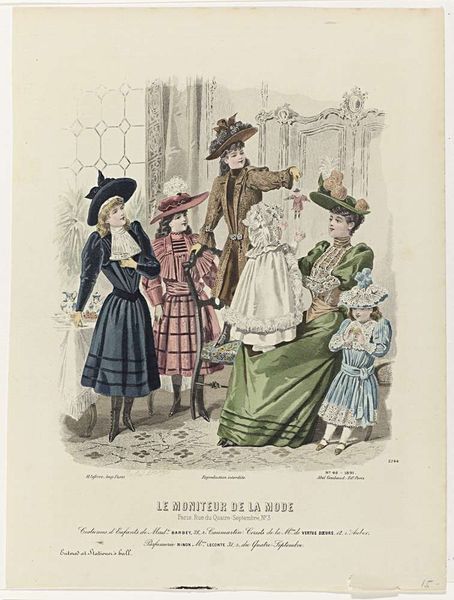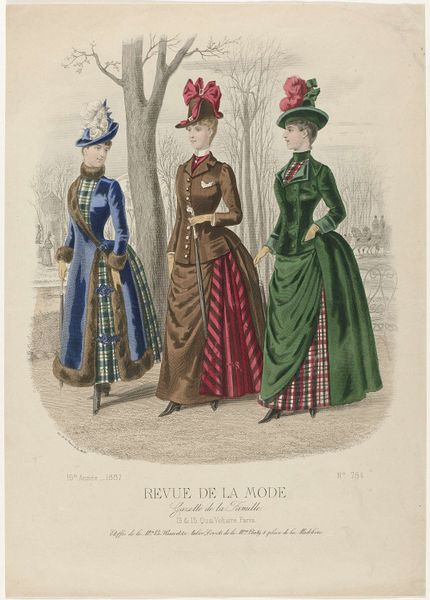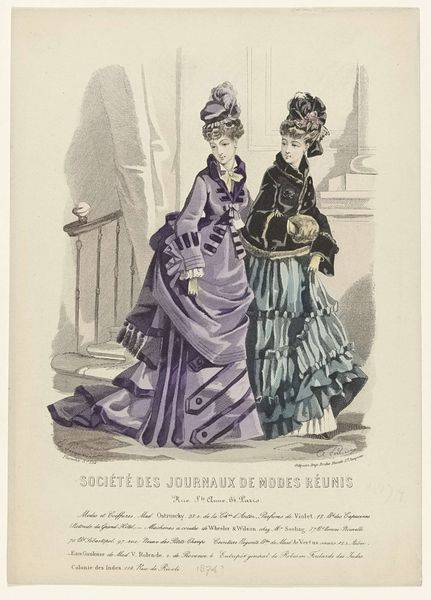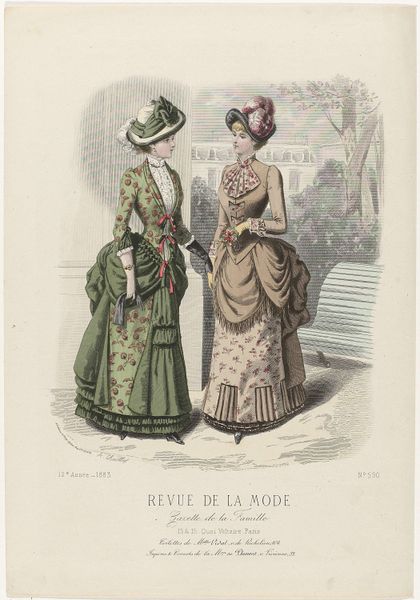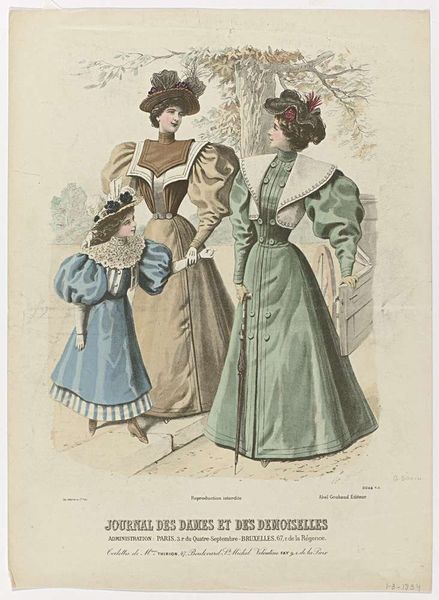
Le Moniteur de la Mode, 1895, Nr. 3182, No. 38: Toilettes de la Mson Rhinn (...) 1895
0:00
0:00
Dimensions: height 393 mm, width 277 mm
Copyright: Rijks Museum: Open Domain
Editor: This is “Le Moniteur de la Mode, 1895, Nr. 3182, No. 38: Toilettes de la Mson Rhinn” by Guido Gonin. It's a print made with watercolor. What strikes me is how it serves almost as a document of a very specific moment in fashion history. How would you interpret this work? Curator: This image is more than just fashion; it's a reflection of societal values and the burgeoning role of women in the late 19th century. The very existence of publications like "Le Moniteur de la Mode" signifies a growing consumer culture and the increasing visibility of women in the public sphere. Who was this magazine aimed at? Editor: Presumably upper-class women who had the leisure time to follow trends. Did these kinds of images play a part in either dictating or reinforcing certain expectations of women at the time? Curator: Precisely! These illustrations, while seemingly innocent depictions of "toilettes," also functioned as subtle guides for behavior, class aspirations, and ideals of femininity. Consider the poses – elegant, but reserved, conveying a sense of decorum appropriate to their station. Do you notice any contrast in color palette from one figure to the next? Editor: Yes, and even fabric. There are florals versus patterns; lighter colors versus darker colors... Curator: And each ensemble isn't just about aesthetics; it conveys information about the wearer's taste, status, and participation in a consumer-driven economy. The layers suggest wealth and privilege but in a period undergoing tremendous change in both production and consumption of goods. Editor: So the fashion choices aren’t just about aesthetics, they are broadcasting socioeconomic standing and potentially aligning oneself with or against societal norms. Fascinating. Curator: Exactly. These images reflect the complex interplay between fashion, identity, and societal structures, and offer a window into the social and cultural landscape of the time. It all goes far beyond dresses, doesn't it? Editor: It certainly does. It makes you consider the subtle ways that media shapes identity, then and now.
Comments
No comments
Be the first to comment and join the conversation on the ultimate creative platform.
